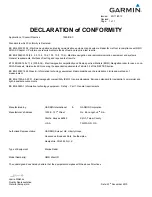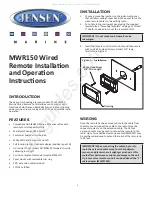
5-17
7. Press the [RADAR MENU] key to close the menu. The label LOG (or NAV) changes to
WT (Water Tracking) or BT (Bottom Tracking). Set and drift data can also be used in
the basic radar without ARPA function.
5.13 Setting CPA/TCPA Alarm Ranges
The ARPA continuously monitors the predicted range at the Closest Point of Approach
(CPA) and predicted time to CPA (TCPA) of each tracked target to own ship.
When the predicted CPA of any target becomes smaller than the preset CPA alarm range
and its predicted TCPA less than a preset TCPA alarm limit, the ARPA releases an aural
alarm and displays the warning label COLLISION on the screen. In addition, the ARPA
symbol changes to a triangle and flashes together with its vector.
Provided that this feature is used correctly, it will help avoid collision by alerting you to
threatening targets. It is important that GAIN, A/C SEA, A/C RAIN and other radar controls
are properly adjusted.
CPA/TCPA alarm ranges must be set up properly taking into consideration the size, ton-
nage, speed, turning performance and other characteristics of own ship.
CAUTION
The CPA/TCPA alarm feature should
never be relied upon as the sole means
for detecting the risk of collision. The
navigator is not relieved of the responsi-
bility to keep visual lookout for avoiding
collisions, whether or not the radar or
other plotting aid is in use.
5.13.1 Setting CPA/TCPA alarm ranges
To set the CPA/TCPA alarm ranges:
1. Press the [PLOT MENU] key to show the ARPA 1 menu.
2. Press the [8] key to select menu item COLLISION ALARM. At this point, a highlight
cursor appears at the “CPA 0.0 NM” field.
3. Enter the CPA alarm range in nautical miles (0.0 to 9.9 nm) without omitting leading
zeroes, if any, and press the [ENTER] key. The highlight cursor now moves to the
“TCPA 00x.0 MIN” field.
4. Enter the TCPA alarm limit in minutes (1.0 to 99.9 min) without omitting leading zeroes,
if any, and press the [ENTER] key.
5. Press the [PLOT MENU] key to close the menu.
















































